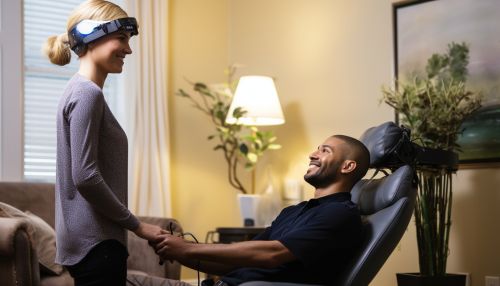Brain Injury Rehabilitation
Introduction
Brain injury rehabilitation is a specialized discipline in the field of neurorehabilitation that is dedicated to the treatment and management of individuals who have suffered a brain injury. Brain injuries can occur as a result of various causes, such as trauma, stroke, tumor, or neurological disorders. The primary goal of brain injury rehabilitation is to help the individual regain the maximum possible functional ability and quality of life.


Types of Brain Injuries
Brain injuries can be broadly classified into two types: traumatic brain injury (TBI) and acquired brain injury (ABI).
Traumatic Brain Injury
Traumatic brain injury is caused by an external force, such as a blow to the head, that causes the brain to move inside the skull or damages the skull. This movement or damage can cause bruising of the brain, damage to nerve fibers, and bleeding.
Acquired Brain Injury
Acquired brain injury is an injury to the brain that is not hereditary, congenital, degenerative, or induced by birth trauma. It can result from a medical condition such as stroke, tumor, or neurological illnesses.
Brain Injury Rehabilitation Process
The brain injury rehabilitation process involves several stages and is tailored to the individual's unique needs and circumstances. It typically begins with acute care and progresses through post-acute rehabilitation, outpatient rehabilitation, and community reintegration.
Acute Care
Acute care is the initial phase of treatment following a brain injury. It involves immediate medical intervention to stabilize the patient's condition, prevent further injury, and begin the recovery process.
Post-Acute Rehabilitation
Post-acute rehabilitation begins once the patient's condition has stabilized. This phase involves intensive, multidisciplinary rehabilitation aimed at restoring the patient's physical, cognitive, and emotional functioning.
Outpatient Rehabilitation
Outpatient rehabilitation is the next stage in the rehabilitation process. This phase involves continued rehabilitation services after the patient has returned home. These services may include physical therapy, occupational therapy, speech therapy, and cognitive rehabilitation.
Community Reintegration
Community reintegration is the final stage of the rehabilitation process. This phase involves helping the patient return to an active, productive life within the community. This may involve vocational rehabilitation, educational support, and social integration programs.
Rehabilitation Therapies
Brain injury rehabilitation involves a range of therapies that are designed to help the individual regain function and independence. These may include:
- Physical therapy: This involves exercises and activities to improve strength, balance, coordination, and mobility.
- Occupational therapy: This focuses on improving the individual's ability to perform daily activities such as dressing, eating, and bathing.
- Speech and language therapy: This helps to improve communication skills and manage problems with swallowing.
- Neuropsychology: This involves assessment and treatment of cognitive and emotional problems.
- Vocational rehabilitation: This helps the individual return to work or school.
Challenges and Complications
Recovering from a brain injury can be a long and challenging process. Individuals may face a range of complications and challenges, including physical disabilities, cognitive impairments, emotional and behavioral changes, and social and vocational difficulties.
Conclusion
Brain injury rehabilitation is a complex and multidisciplinary field that aims to help individuals recover from a brain injury and regain their independence and quality of life. Despite the challenges and complications, many individuals can make significant improvements with the right support and rehabilitation services.
